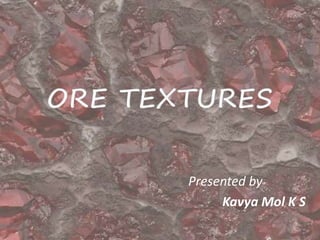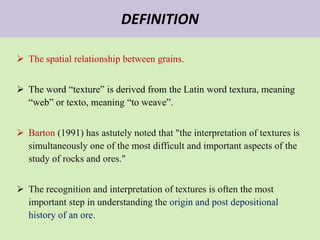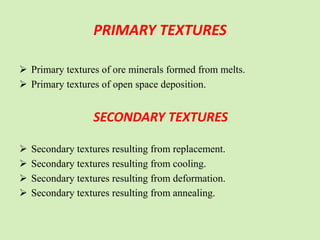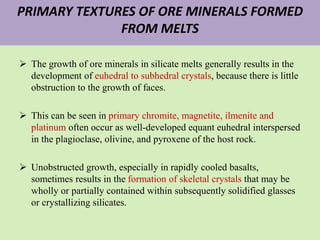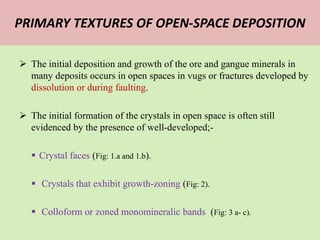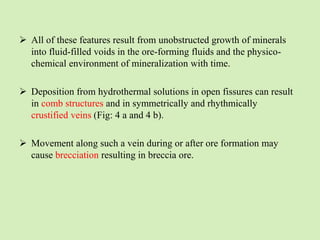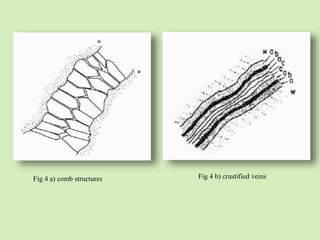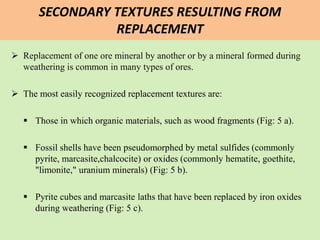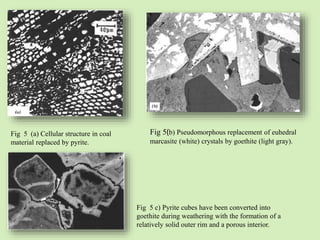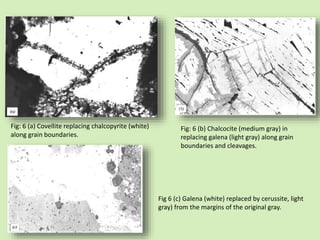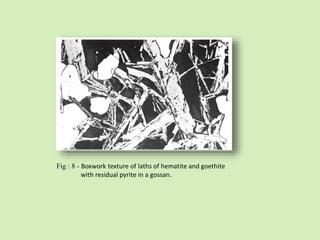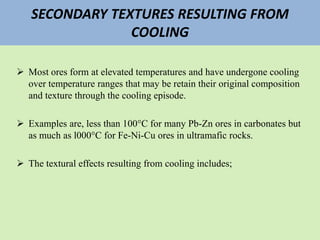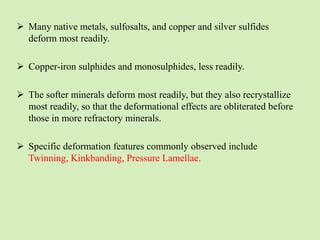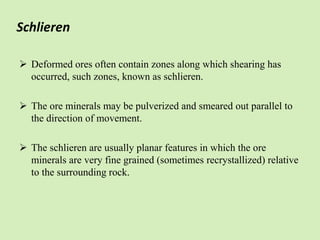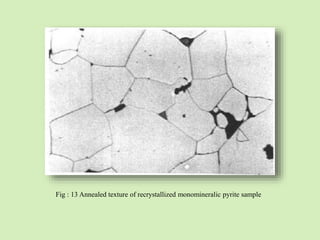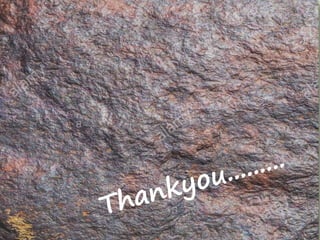This document discusses rock textures in ores and their significance. It defines texture as the spatial relationship between grains. Primary textures form during initial ore deposition from melts or in open spaces, while secondary textures result from processes like replacement, cooling, deformation, and annealing. Specific primary textures include euhedral crystals from melts and growth zoning in open spaces. Replacement forms pseudomorphs and exsolution creates intergrowths. Deformation causes features like twinning, kink bands, and brecciation. Together, textures provide clues about an ore's depositional history and post-depositional changes. Careful study of textures is important for understanding ore genesis and evolution.
